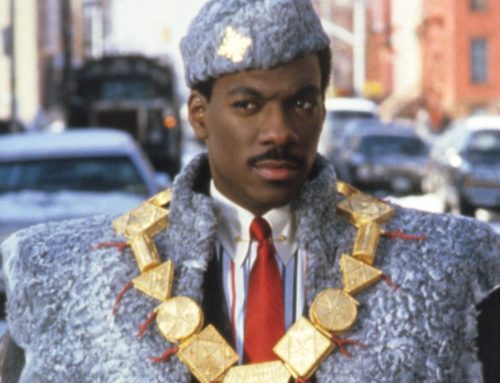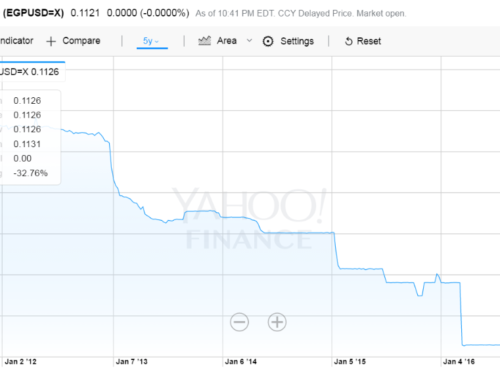On Jan. 25, the third anniversary of ex-dictator Hosni Mubarak’s ouster, violence broke out on Egypt’s streets, led by mobs exacting vigilante justice on anyone who dared to question the government. The clashes came just a few days after a new constitution was approved with 98.1 percent in a less-than-democratic referendum. Activists who distributed flyers criticizing the vote were attacked and beaten. (Some were also arrested.)
The anniversary brought frightening images of what Egypt has become. When Arab Spring revolutionaries — those who not long ago dethroned Mubarak and who remain associated with the Tahrir Square demonstrations — staged a march to commemorate the events of January 2011 and denounce the military’s renewed dominance, they were met with such violence that one activist, whom I personally know to be very brave, sent out a warning: “Grab a Sisi poster and walk casually out of there. Get the fuck out of downtown. It’s extremely dangerous and useless.”
Street vendors were spotted selling posters of Mubarak; one would be hard-pressed to find a more egregious symbol of Egypt’s backsliding. Yet most of those flooding the streets celebrated a new deity: General — pardon me, Field Marshal — Abdel Fattah al-Sisi.
In Alexandria, mobs also assaulted virtually anyone who wasn’t actively declaring their love for Sisi. Angry crowds attacked journalists — andanyone with a camera, really. In one video, several women were assaulted so viciously that they sought refuge in a nearby shop. When the police dragged them out, bystanders insulted, hit, and sexually assaulted the vulnerable women. The police, naturally, did nothing but arrest the victims.
These angry masses are a force to be reckoned with — and they are also a malleable tool in the hands of the security forces. Perhaps the most tragicomic moment of protests occurred when, unaware that the camera was rolling, policemen threatened a private television crew, warning that they would “unleash people on you and tell them you work for Al Jazeera.”
Egypt is spiraling into fascism, and its descent is tangible, palpable, and well-documented. But it is this normalization of mob violence that frightens me most. Whenever you find yourself outnumbered by members of the opposing political camp, there’s a good chance you’ll fall victim to potentially deadly violence. This has become a regular fact of life — and that, to me, is much more frightening than the violence itself.
Barely anyone is condemning this citizen violence. The general attitude among most Egyptians ranges from approbation to indifference to victim-blaming, as if someone who dares to hold a camera deserves to be beaten by random strangers.
In a way, though, this isn’t new. Egypt has a history of vicious grassroots policing. Neighborhood residents regularly pummel robbers caught stealing rather than call the police. Hit-and-run accidents are all too common, because drivers know that if they stop, they might be killed by angry residents and passersby. This is sad, but it’s no joke.
There is also nothing new about the cynical, political use of mob violence against political opponents.
Since the first day of the revolution, mobs have attacked political dissidents, often under the watchful eye of security forces. Countless protesters were assaulted during the revolution’s protests by emotionally charged crowds, barely escaping with their lives. I was the subject of such irrational savagery myself. Nearby army officers watched as a mob manning an ad-hoc checkpoint beat me up. When the officers finally detained me, they told me that I was better off that way: if they let me go I’d be killed by the mob. They were probably right. During my overnight detention in the army encampment, I watched members of those mobs come by and deliver the food, water, and medication they had stolen from protesters to the soldiers, whose explicit approval for these actions was more than obvious.
But perhaps the most visible instance of mob violence was the infamous “Day of the Camel,” when pro-Mubarak thugs, some mounted on horses or camels, attacked protesters in Tahrir Square. Most people attributed the violence to “paid thugs” (baltageya in Arabic), making the implicit assumption that someone would only attack peaceful protesters if they were paid to do so. In reality, many in the assaulting crowd were merely enraged people who took the opportunity to throw a punch.
At the same time, officials exhorted citizens to help guard their neighborhoods as the police cowered. These “popular committees” used their implicitly state-sanctioned role to assault anyone they deemed “suspect” — and at times rob or harass innocents.
But it was only in July 2011 that these freelance thugs won their tongue-in-cheek nickname: “Honorable citizens.” The “honorable citizens,” as distinct from the “paid things,” are the obedient attack hounds of the state. These are the people who, on July 23, 2011, at the implicit request of the Supreme Council of the Armed Forces spokespeople and pro-government media, ambushed a march that was heading from Tahrir Square to the Ministry of Defense. It was this mob that murdered 23-year-old Mohamed Mohsen.
Since then, the “honorable citizens” — individuals who find sport in beating protesters with the enthusiastic consent of the security forces — have been a staple of every protest. They take out their frustrations — at political instability, at the bad economy, perhaps even at terrible weather — on protesters. Under Mohamed Morsi’s reign, the “honorable citizens” conducting the mass beatings were the Muslim Brotherhood’s rank-and-file members and supporters. Though more systematic and vicious, the civilians operated with the knowledge and guidance of the ruling authorities, terrorizing those who disagreed with their political ideology. Today they have been replaced by the extreme fringe of Sisi supporters.
Sexual violence is another horrible aspect of mob violence. Mass sexual harassment has been a recent staple of public holidays over the past decade; its use as a political tool is more recent and equally savage. Dozens of sexual assaults and rapes have been reported during the largest protests, as early as 2011. The handful of accounts offered by survivors and volunteers vividly documents the viciousness of the mobs.
Mob violence in Egypt is a worsening nightmare, and though it often goes unreported (since snapping photos of a lynch mob can be bad for your health), it poses an urgent danger to today’s peaceful protest movement. For now, Egypt’s new rulers are quite content to use this violence to their advantage. But they’ll soon discover that they’ve created a monster — one that might one day turn against them. In August 2013, in the wake of theRabaa massacre (when the police murdered hundreds of Muslim Brotherhood supporters), the Ministry of Interior briefly realized the risks entailed by relinquishing the state monopoly on violence. The Ministry attempted to declare the “popular committees” illegal and asked them to disband.
But that attempt to renounce the power of the mob was short-lived, and the current government now appears to have returned to using mob violence against its political opponents.
We have reached the point where these mobs have, for lack of a better term, become self-aware. They no longer need the media or the government to incite their rage. Now they’re ready to attack anyone who dares to snap a photo of graffiti, or is unfortunate enough to do so while looking like a foreigner.
Talk of peace and compromise is meaningless amid a climate of constant intimidation by the mob and the authorities. The atmosphere of violence makes a mockery of any hope of reviving the tourism industry that was once so vital to our economy. A backlash is inevitable. This time around, it won’t take 60 years of army rule.
Originally published in Foreign Policy: Transitions



